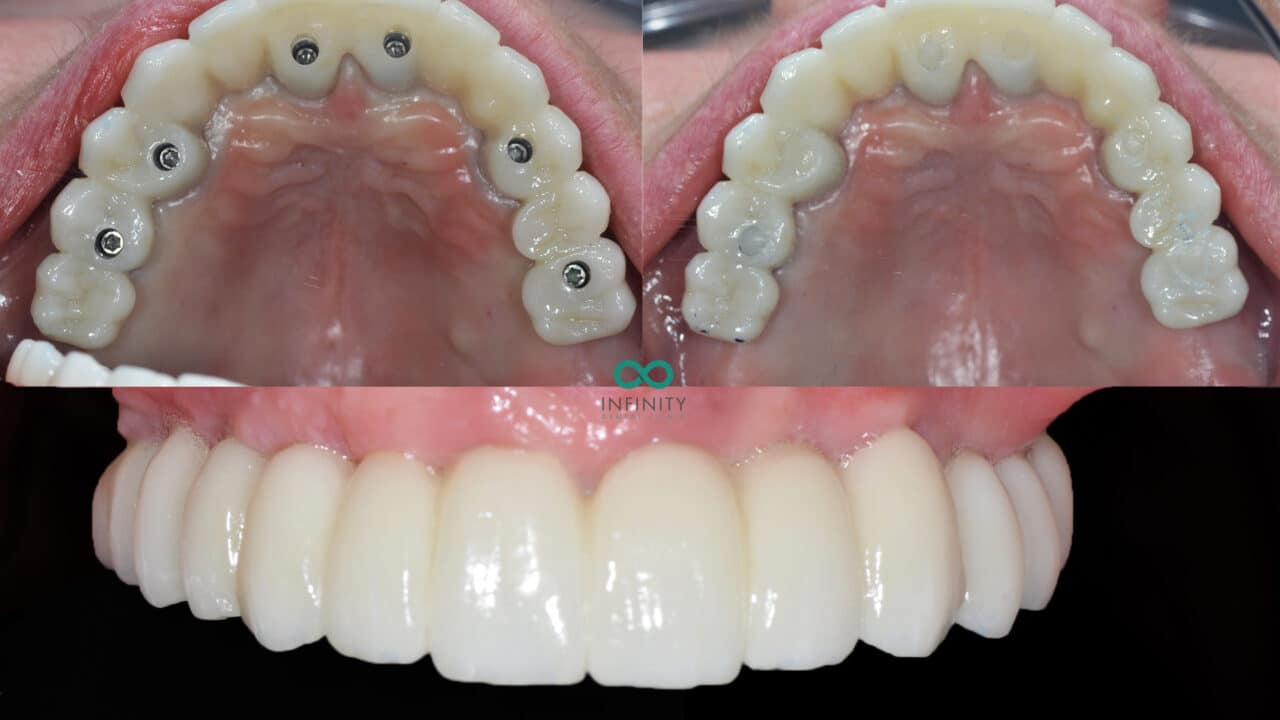Getting My Dental Sense To Work
Getting My Dental Sense To Work
Blog Article
Some Ideas on Dental Sense You Need To Know
Table of ContentsThe Main Principles Of Dental Sense Dental Sense Can Be Fun For EveryoneThe Of Dental SenseThe Of Dental Sense
are clinical tools operatively dental implanted into the jaw to recover a person's capability to eat or their look. They provide support for artificial (fake) teeth, such as crowns, bridges, or dentures. When a tooth is shed due to injury or illness, a person can experience complications such as fast bone loss, faulty speech, or adjustments to eating patterns that lead to pain.Dental implant systems are composed of a dental implant body and oral implant joint and may likewise consist of a joint addiction screw. Front tooth filling. The oral implant body is surgically put in the jawbone in area of the tooth's origin. The oral implant abutment is generally affixed to the implant body by the abutment fixation screw and prolongs with gums right into the mouth to sustain the affixed man-made teeth
(https://hearthis.at/matthew-music/set/dental-sense/)Structure of The Dental Implant System choosing oral implants, speak with your dental provider regarding the possible benefits and dangers, and whether you are a candidate for the procedure. Things to take into consideration: Your overall health and wellness is a vital aspect in figuring out whether you are a great prospect for dental implants, how much time it will certainly require to recover, and for how long the dental implant may stay in location.
Smoking may affect the recovery procedure and decrease the long-lasting success of the dental implant. The recovery procedure for the dental implant body might take a number of months or longer, during which time you generally have a short-lived abutment instead of the tooth. the dental implant treatment: Very carefully comply with the dental health instructions provided to you by your oral provider.
Dental Sense - The Facts
Implant failure can cause the need for another procedure to fix or change the implant system. Brings back the capability to eat Restores cosmetic look Assists maintain the jawbone from reducing due to bone loss Preserves the wellness of the surrounding bone and gum tissues Assists keep nearby (close-by) teeth steady Enhances quality of life Damage to surrounding natural teeth throughout implant positioning Injury to the surrounding cells throughout surgery, such as sinus opening Injury during surgical treatment (for instance, fracture of surrounding jawbone) Insufficient feature, such as feeling like the teeth do not bite with each other typically An experience that the tooth is loosened or turning in position resulting from a joint screw loosening Implant body failing (looseness of the implant body) as a result of systemic infection, which may be more probable in clients with uncontrolled diabetes because of neighborhood infection in bone and gum tissues supporting the dental implant body because of delayed healing, which may be more probable in people who smoke Trouble cleansing the gum tissues around the implant, leading to bad dental health Without treatment periodontal illness Post-surgical tingling due to nerve impingement or damage Always inform health and wellness treatment companies and imaging service technicians that you have dental implants before any type of magnetic resonance imaging (MRI) or x-ray treatments.
FDA is not knowledgeable about any type of damaging occasions reported for MRI or x-ray treatments with dental implants. Dental implants systems are normally made of products that adhere to international consensus criteria of the International Company for Standardization (ISO) or ASTM International. These standards have details of what makes a safe product.

A dental implant is a structure that replaces a missing tooth. With screw-like devices, the cosmetic surgeon inserts a dental implant right into the jawbone, and it serves as a support for an artificial tooth, called a crown. A tool called an abutment attaches the man-made tooth to the dental implant. The crown is customized to fit the individual's mouth and match the shade of their teeth.
5 Simple Techniques For Dental Sense
Some people are not qualified for oral implant surgery. It is for oral cosmetic surgeons to run on individuals with: intense illnessuncontrollable metabolic diseasebone or soft cells disease or infectionIf these concerns are resolved, an individual can have the surgical treatment. In, dental surgeons refrain from operating individuals with: If individuals with any of the above undertake oral implant surgical treatment, there is a higher risk of the dental implant failing.

Oral implant surgical procedure is a tailored process. Give you time to recover. Attach the article and last crown, bridge or denture.
Next, your surgeon will meticulously place the dental implant into your jaw. Your doctor will certainly reposition your gums and shut the cut with stitches. If your implant is near the front of your mouth, your dental professional will certainly make a momentary tooth for you to use till you recover. That means, you won't have a gap in your smile while you recuperate.
The Ultimate Guide To Dental Sense
Your service provider can tell you what to anticipate in your scenario. During the healing stage, your jawbone needs to fuse to the dental implant. This process, called osseointegration, is vital for go right here security and lasting success. This procedure can take anywhere from three to nine months. Sometimes, it may take much longer.
When your implant heals, your dental practitioner can connect the abutment (tiny connector blog post) and your last repair (crown, bridge or denture). This typically takes regarding one hour to finish and might need a second small surgery. You shouldn't feel any pain during your dental implant procedure since your service provider will make use of medicine to numb your gum tissues.
Report this page